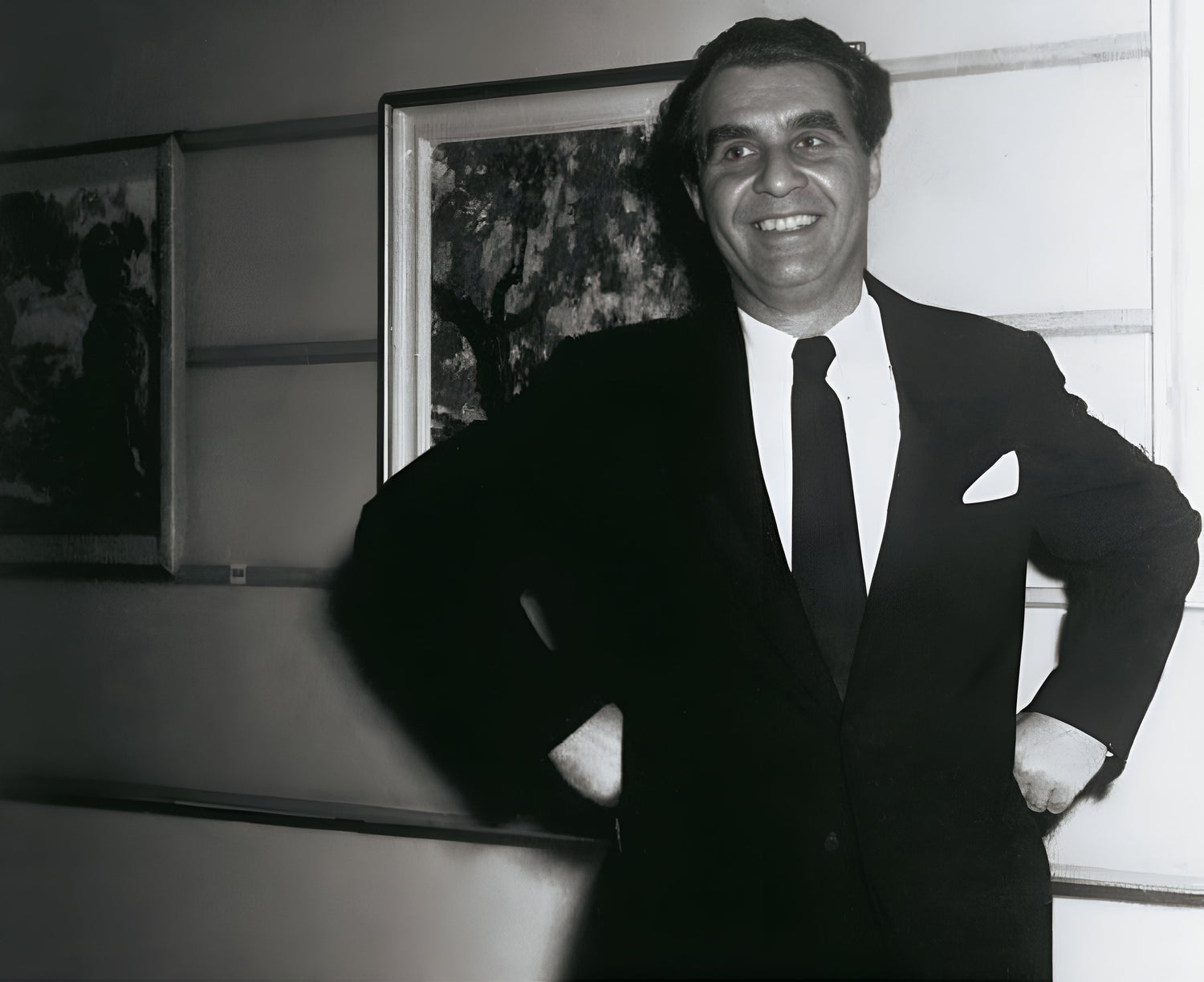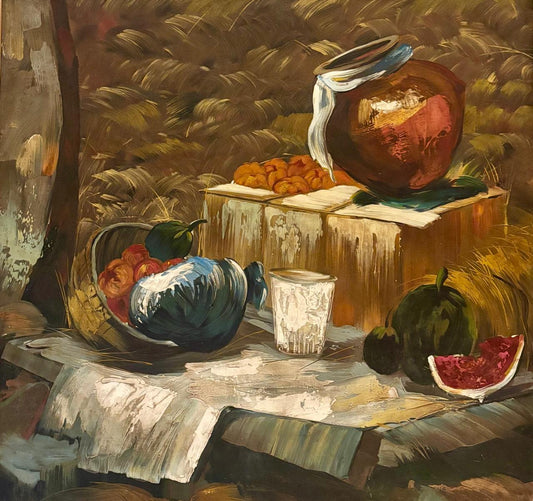
WALTER LANGHAMMER
Walter Langhammer brought to his painting a bold clarity of vision, one shaped by the precision of European modernism and the intensity of India’s color and light. Arriving in Bombay in 1938, having fled Nazi-occupied Austria, Langhammer entered a city in flux, and soon became a catalytic presence in the development of Indian modern art. His background as an established artist and art critic in Vienna, coupled with his openness to new environments, positioned him uniquely to influence a generation of emerging Indian painters eager to move beyond colonial academic conventions.
His work reveals a painter deeply moved by sensory experience. Indian landscapes, bustling markets, figures at work or rest, each is rendered with a luminous palette and bold structural clarity. The tropical light of Bombay transformed his palette, giving rise to radiant yellows, blazing reds, and deep, saturated blues. His brushstrokes are vigorous yet controlled, echoing Expressionist and Post-Impressionist sensibilities while embracing the vitality of his new surroundings. Langhammer painted not as a visitor, but as someone deeply engaged with the rhythm of life around him.
Beyond his studio practice, Langhammer’s influence extended to shaping an artistic community that would define Indian modernism. His Mumbai apartment became a space of exchange, where artists like F.N. Souza, S.H. Raza, and M.F. Husain encountered modern European ideas firsthand. These gatherings, informal but deeply formative, helped crystallize the ethos that would define the Progressive Artists’ Group. He was not only a mentor but also a connector, encouraging risk, dialogue, and artistic individuality at a time when few institutional structures supported such freedom.
Langhammer’s commitment to fostering this new wave of art in India was not without personal cost. His early years in Bombay included a period of arrest by British colonial authorities. Yet even amidst political tension, he remained fiercely dedicated to painting and to the cause of artistic innovation. His dual legacy, as both an artist of formidable skill and a cultural catalyst, continues to resonate. His works, with their fusion of European technique and Indian subject, remain a vivid testament to the power of cross-cultural transformation. Langhammer’s contribution to Indian art lies not only in the canvases he created, but in the generations of artists he empowered to look beyond received tradition and chart their own visual languages.

